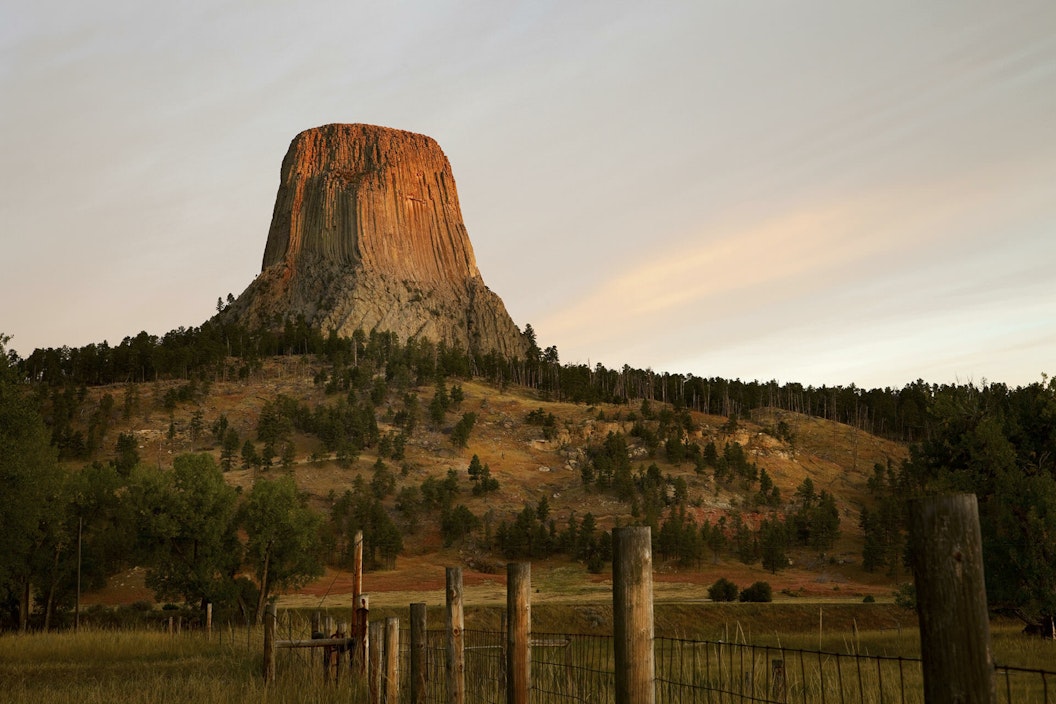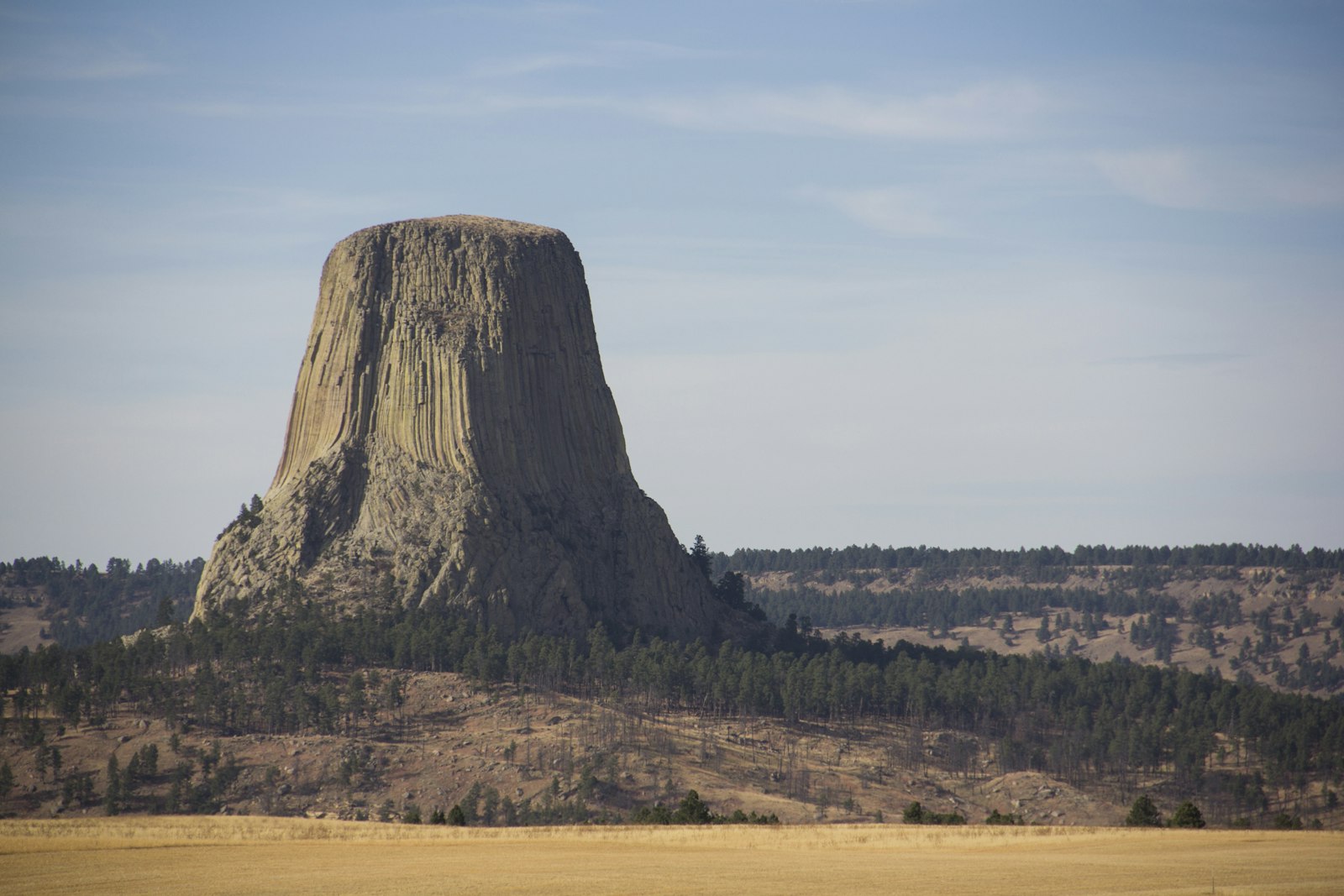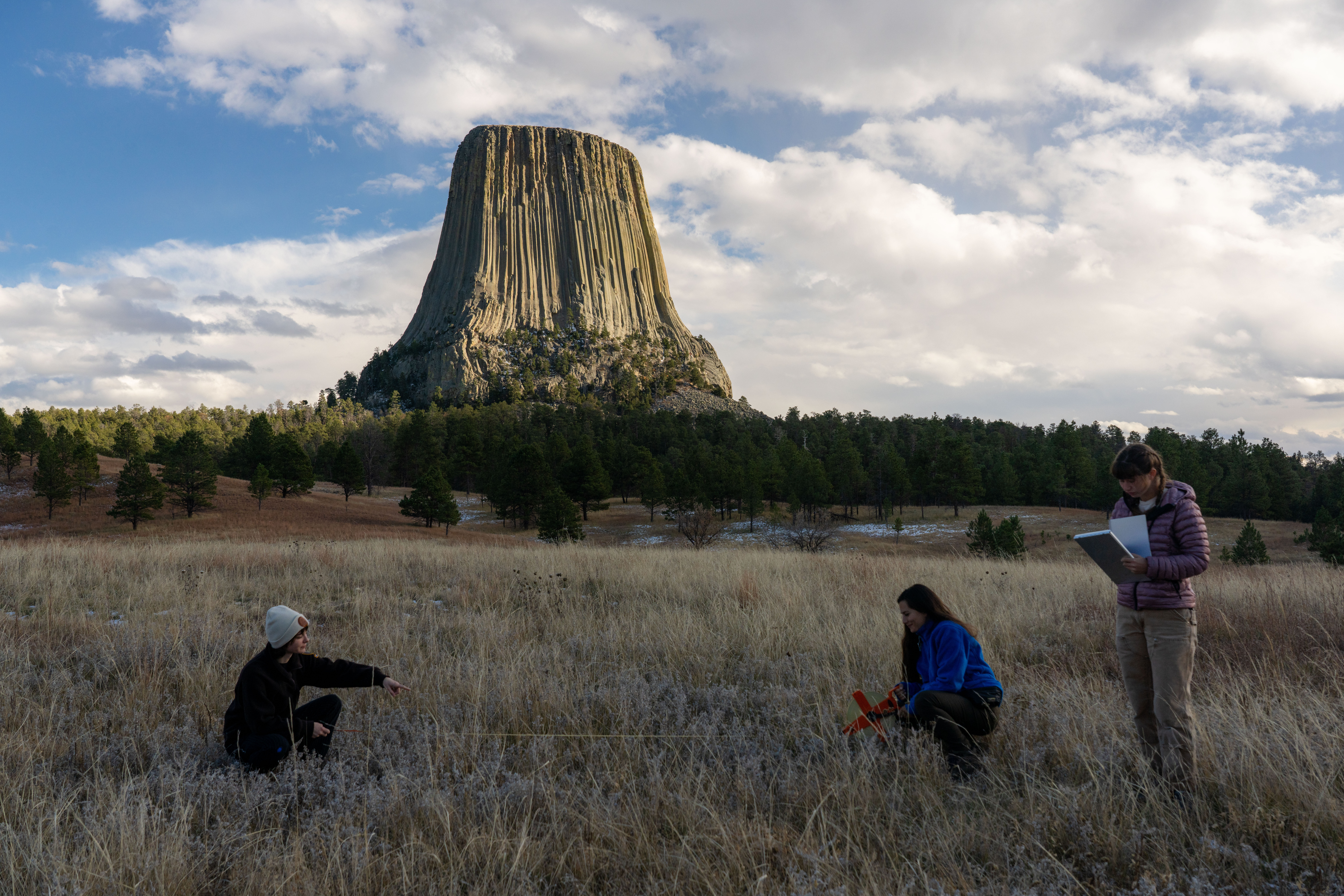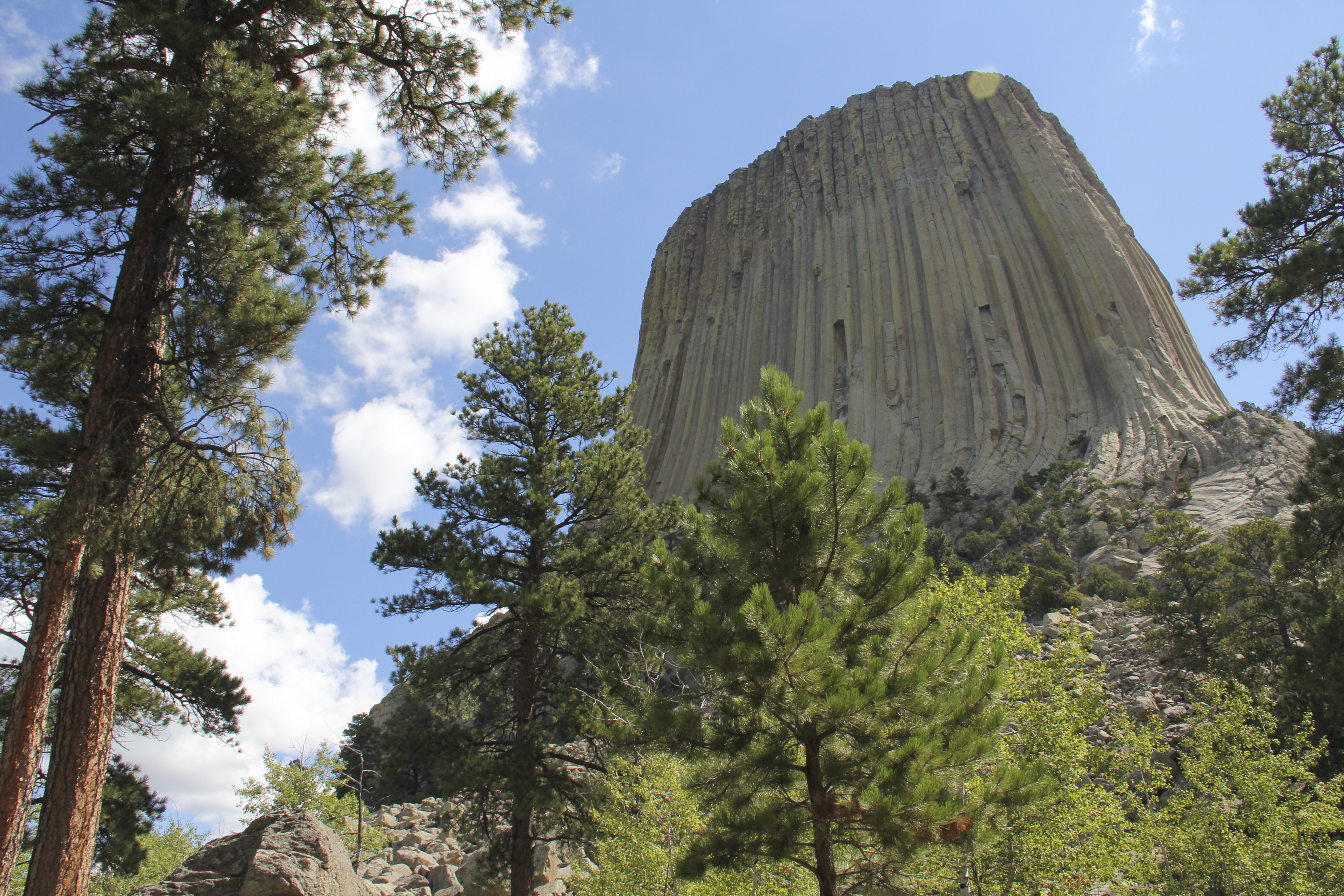
Close Encounters of the Third Kind made Devils Tower a pop culture phenomenon, and for good reason, as it's one of the most mysterious national parks.

The Tower in the Black Hills of Wyoming is considered sacred by Northern Plains Indians and Indigenous people – many oral histories and sacred narratives helped connect people with the tower site. Many tribes of the Great Plains and Black Hills regions had connections with the area around what’s now Devils Tower National Monument, and today there are dozens of tribes associated with the site, including the Arapaho, Crow, Cheyenne, Shoshone, and Lakota.
Thanks to the National Park Foundation (NPF)’s Native American History and Culture fund the park to better understand the prehistoric occupation of the region through archeological work done in its northern meadows. Deepening knowledge of this important site and cultural resources is vital in understanding the human history of the Tower and its surrounding area. It’s also critical to learn more about the locations of these resources to ensure they can be protected, interpreted, and preserved in the best possible way.

In 2021, Russ Cash, Chief of Resources Management and the park’s sole archeologist discovered anomalies in the vegetation that blankets the park’s northern meadows. From brief investigations, the park suspected they may be due to remnants of sweat lodges, tipis, and hearths used by indigenous communities. Scientific curiosity was high, yet smaller park units often lack resources to swiftly engage in new efforts such as this one.

Through the NPF grant, the park was able to hire two archeology interns to assist the effort. Sierra Bennaton had recently earned an associate degree in archeology and worked previously at Devils Tower. Shelby Constandaki completed her bachelor's degree in anthropology and archeology and brought field experience documenting archeology sites and historic structures to the project. Together, under the guidance of Russ Cash, they went to work to identify, photograph, and develop archeological site maps of the area. While no substantial archeological findings had been made in this area in many years, the group used new technologies methods such as ground-penetrating radar (GPR) to conduct subsurface, non-invasive surveys to detect any buried physical structures and artifacts previously unseen. Respecting the Indigenous cultures that consider the Tower sacred, the park did not collect any artifacts.
Conducting pedestrian surveys, the archeologists carefully walked transects across the meadows along Joyner Ridge, identifying all anomalies for investigation along the way. While original estimations presumed that there may be approximately three dozen areas, their work revealed there were over 200 features of interest on the site to map and document!
With these findings, additional ground-penetrating radar work will be conducted across the landscape documented by this project, and the park will continue its discussions with tribes to develop further understanding of these documented features. Says Cash, "there is still a tremendous amount of data to be collected and an incredible archeological site to better understand!" The park also continues to digitize the data collected, ensuring the findings will be added to associated archeology site records, eventually to be added to the cultural resources archive at Devils Tower and in museum collections housed at Mount Rushmore. Due to the additional identified sites during this project, the park will continue its archeological documentation as funding and staffing allows.

Thanks to the work of these archeologists, the prehistoric occupation of the northern portion of the park is now much better understood. Prior to this project, there were no known occupations of this section of the park – now it is known that this was likely home to the largest occupations within the park boundaries during the prehistoric period. Better understanding these archeological sites helps NPS better protect the histories of peoples who have been at this site for centuries, as well as provide effective educational programs about those histories to students, park visitors, and other organizations.